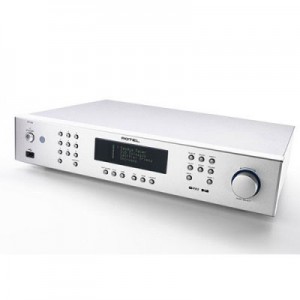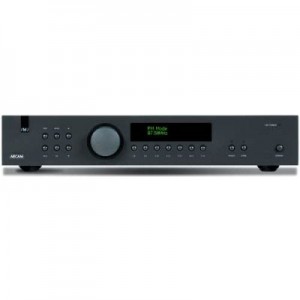Getting the best out of
Analogue Tuners…
We all love the radio. It is a great, effective format that can do so many things. News, entertainment, music and topical programmes all have their home upon the waves of the radio. However, radio, as a format, has dramatically changed over the last decade. DAB (Digital Audio Broadcasting) became a new sensation which offered more choice from independent stations and the mainstream broadcasters of whom could now be heard in hiss-free digital quality. However, even more of advancement in radio is the recent technology which allows for internet radio to be listened to on Hi-Fi and even portable players, just like the iPod for example.
Radio’s face is changing as the technology in the world grows. Rumours have spread across the UK that FM wavebands will be phased out in the near future to make way for ‘White Space’ devices. FM’s ability isn’t to be underestimated, and technological researchers have realised that FM can help by becoming a further internet source for areas of inaccessibility. However, some people feel that the loss of FM transmission for radio will sacrifice the quality when a majority of large stations will be standardised for broadcasting on the DAB system (which can compress the overall audio quality and performance on large systems). However, smaller stations are set to be saved from the transfer if they haven’t a huge budget to cost for the new equipment and adaptations required. Yet, with all of these rumours, the traditional FM radio band is one that we rely on as a tested and effective method of broadcasting because of its strong reliability and, if set-up correctly, outstandingly warm, charismatic tonal qualities.
We at Hifi Gear still love the radio. We feel it is still an essential within a modern Hi-Fi set-up. Many manufacturers that we are proud to house all still produce an FM/AM tuner of some description. Teac, Arcam and Denon are great manufacturers of tuners and have evidence in their products that analogue radio should remain here to stay. They all have made great pieces that squeeze the very best out of both FM and AM bandwidths. After all, the quality of radio lies in the receiver, not as much in the transmitter. Of course, a quality transmitter is ideal, but the receiving end should be able to get the maximum quality out of the reception that is presented to it. Circuitry in modern receivers is much more refined than in previous years. With that in mind it is easy to see and, more importantly, hear that radio has become more crisp and cleaner over the years. One problem is that in today’s world we use a lot of modern, wireless devices: Bluetooth, wireless internet and television waves also occupy the air in which FM and AM bandwidths travel. Interference can be a huge quality killer if a strong aerial is not used. Using a strong aerial, like an external house television aerial, will help to maximise reception as best of possible with the radio waves that are available. Install a double aerial socket in your wall where your current single point is, or use a double adapter. This will allow you to connect your television system, as well as your FM receiver, consecutively. Now that you have secured a strong reception field you can enjoy analogue radio with limited hiss and maximum tonal quality and superb clarity.
If you are unable to use or access and external aerial, a few simple steps with an internal aerial can help:
1. You could use the manufacturer’s supplied aerial, often of which is a single wire, but placing it highly against a wall or a metallic object. However, avoid placing it closely to a speaker cable as this can cause interference if the speaker isn’t magnetically shielded.
2. Alternatively, use an indoor television aerial with an additional signal booster. This will maximise reception potential when indoors by boosting then signal again.
3. Research the best possible frequencies for when tuning in to your favourite station, making sure any tuning indicators or stereo reception indicators are lit in the tuner’s display.
We have a large range of tuners available, along with digital alternatives as explored in the next blog article: ‘Digital Radio Explored’.


